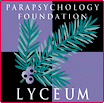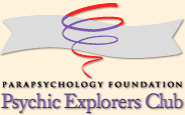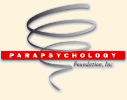 |
 |
| by Carlos S. Alvarado, Ph.D. Stevenson was cautious, and sometimes suspicious, about hypnotic regression as a method for eliciting possible previous life recollections. His work focused on spontaneous recollections by children; for a short video of Stevenson talking about these cases click here. Although he studied cases from Europe and the United States, most of Stevenson’s cases came from countries in which there was a wide belief in reincarnation such as Burma, India, Sri Lanka, and Thailand. Stevenson travelled to many villages in these and other countries and interviewed the children, the families of the children, the families of the “previous personality,” and other witnesses. Whenever relevant, he checked written documents such as death certificates and hospital records. Most cases presented children between the ages of two and five who talk about details of a previous life. This included aspects of the previous life such as names of and details about family members, the place where they used to live, their property, how they died, and many other details. The first task was to assess what information could be verified, and to check for normal explanations for this knowledge such as hearing someone talking about the previous personality, or outright deception. In the best cases Stevenson found veridical information for which, Stevenson believed, a normal explanation was unlikely (for an example of such a case click here). In addition to the presentation of veridical statements about a previous person, Stevenson identified other characteristics of these cases. Among these were phobias related to the manner in which the previous personality died, such as an intense fear of water if the person claimed he or she drowned in their previous life, or a fear for a particular weapon that may have been used to kill him or her. Other features included particular behaviors or preferences (e.g., foods not typical in the current family circle), and behaviors consistent with those shown in the deceased person. In some cases the child was born with birthmarks and birth defects that were similar to those in the deceased person or that were related to his or her mode of death. Consequently, in addition to the informational aspects of the case (the information given by the child), the cases also had components that were behavioral (phobias and preferences), and biological (birthmarks and birth defects). In addition, some cases included what Stevenson called announcing dreams. These were dreams experienced by someone connected to the child before the child’s birth in which a deceased individual appeared and communicated his or her intention or desire to return to life. Stevenson was the first one to recognize that his work was not perfect. Criticisms have been raised regarding the weakness of human testimony, and alternate parapsychological explanations have also been offered, such as the idea that ESP ability allowed the child to obtain veridical information. Furthermore, Stevenson has been accused of being mislead by his belief system, as if those who have raised issues about what they perceive to be Stevenson’s beliefs are completely neutral about their own underlying beliefs and assumptions. But regardless of the final interpretations of the cases it should be recognized that Stevenson gave careful and due consideration to alternate explanations. In fact, I believe that Stevenson himself showed a better knowledge of the literature in which these alternative explanations are expressed than have many of his critics. Furthermore, Stevenson frequently went out of his way — something you rarely see a critic do — to clearly state what his own beliefs were. Different from many critics of reincarnation research, and of parapsychology in general, Stevenson adopted an empirical approach. In addition, he was not dogmatic in his conclusions. As he wrote in his book Children Who Remember Previous Lives: “I have no preferred interpretation for all cases, and I do not think any single one of them offers compelling evidence of reincarnation. Yet I can say that I think reincarnation is, for some cases, the best interpretation. I am not claiming that it is the only possible interpretation for these cases, just that it seems the best one among all those that I have mentioned” (Stevenson, 1987, p. 158). Although I am not convinced by the evidence for reincarnation, I am impressed by Stevenson’s thoroughness and patient accumulation and analysis of data. His long-term and detailed case studies represent a program of research that has no equal in the history of parapsychology, as can be seen in books Twenty Cases Suggestive of Reincarnation (1966, 2nd rev. ed., 1974), Cases of the Reincarnation Type (1975, Vol. 2, 1977, Vol. 3, 1980, Vol. 4, 1983), Reincarnation and Biology: A Contribution to the Etiology of Birthmarks and Birth Defects (2 vols., 1997), and European Cases of the Reincarnation Type (2003), not to mention the numerous papers on the subject (for a bibliography click here). Stevenson, I. (1974). Twenty Cases Suggestive of Reincarnation (2nd rev. ed.). Charlottesville, VA: University Press of Virginia. (1st edition published in 1966). Stevenson, I. (1975). Cases of the Reincarnation Type: Vol. 1: Ten Cases in India. Charlottesville, VA: University Press of Virginia. Stevenson, I. (1977). Cases of the Reincarnation Type: Vol. 2:. Ten Cases in Sri Lanka. Charlottesville, VA: University Press of Virginia. Stevenson, I. (1980). Cases of the Reincarnation Type: Vol. 3: Twelve Cases in Lebanon and Turkey. Charlottesville, VA: University Press of Virginia. Stevenson, I. (1983). Cases of the Reincarnation Type: Vol. 4: Twelve Cases in Thailand and Burma. Charlottesville, VA: University Press of Virginia. Stevenson, I. (1987). Children Who Remember Previous Lives: A Question of Reincarnation. Charlottesville, VA: University Press of Virgina. Stevenson, I. (1997). Reincarnation and Biology: A Contribution to the Etiology of Birthmarks and Birth Defects (2 vols.). Westport, CT: Praeger Scientific. Stevenson, I. (2003). European Cases of the Reincarnation Type. Jefferson, NC: McFarland. |
 |

|
 www. parapsychology. org |
||